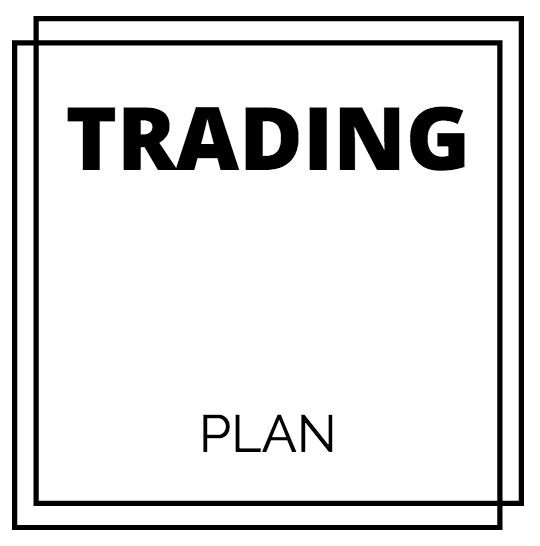
Trading is exciting. Trading is hard. Trading is extremely hard. Some say that it takes more than 10,000 hours to master. Others believe that trading is the way to quick riches. They might be both wrong. What is important to know that no matter how experienced you are, mistakes will be part of the trading process.
That’s why you should be prepared to expect them and if possible not make them. Easier said than done you would say and you will be completely right. That is why I have compiled that list of trading mistakes that you should be trying to avoid. Real life trading will show you how “easy” that could be.
1. Trading without having a predefined trading plan

The first of the 10 fatal trader mistakes often made is trading with no plan. Having a written predefined trading plan will help you for two reasons. Trading depends on several aspects, which include the situation in the markets around the world, the status of overseas markets, the status of index futures such as Nasdaq 100 exchange-traded funds. Considering index futures is a wise option for evaluating the overall market conditions.
Make a to-do list and build a habit of researching the market before calling your shots. This will not only keep you from taking unnecessary risks, but it will also minimize your chances of losing money.
2. Over-leveraging
Over-leveraging is the second mistake of “what are the 10 fatal mistakes traders make”. Over-leveraging is a two-edged sword. In a winning-streak it could be your best friend, but when the trend changes, it becomes the greatest enemy. Recent talks about banning leverage higher than 1:50 for experienced and 1:25 for new traders in the UK have been a result of a lot of traders losing their money too fast. Whether it will happen next year or not is a matter of time for us to see. This is good news for most of the inexperienced traders, because it will somehow limit their exposure. It will allow them to follow their money management rules easier. For greedier and more impatient traders, this is terrible news. Fortunately, this might lead to a better result on their performance in the long term, as well.

Over-leveraging is a dangerous way to believe you can make more money quicker. A lot of traders are mislead into this way of thinking and end up losing all their money in a short period of time. Some brokers are offering insane amounts of leverage (like 1:2000) that can lead to nothing more than oblivion. Therefore, one needs to be extremely careful when selecting those levels and the brokers that represent them. That’s why diversification among different brokers is probably the best strategy.
3. Staying glued to the screen
a) Set entry rules
Computer systems are more effective for the purpose of trading because they don’t have feelings about the things that go into the trading environment and they are neither emotionally attached to the factors that are in one way or the other related to trading. Moreover, computers are capable of doing more at a time as compared to mechanical traders. This is one of the several reasons that more than 50% of all trades that occur on the New York Stock Exchange are computer-program generated
A typical entry rule could be put in a sentence like this: “If signal A fires and there is a minimum target at least three times as great as my stop loss and we are at support, then buy X contracts or shares here.” Computers are more rational when it comes to taking quick decisions following a set of rules. No matter how experienced traders are, sometimes they tend to be hesitating at taking a decision no matter what their rules state.

b) Set exit rules
Normally, traders put 90% of their efforts in looking for buy signals, but they never pay attention to when to exit. At times, it is difficult to close a losing trade, but it is definitely wiser to take a small loss and continue looking for a new opportunity.
Professional traders lose a lot of trades each day, but they manage their money and limit their loses, which leads to a profitable trading statement for them.
Prior to entering a trade, you should be aware of your exits. There are at least two for every trade. First, where is your stop loss if the trade goes against you? This level must be written down. Mental stops don’t count. The second level is your profit target. Once you reach there, sell a portion of your trade and you can move your stop loss on the rest of your position to break even if you wish. As discussed above, never risk more than a set percentage of your portfolio on any trade.
4. Trying to get even or being too impatient
What are the 10 fatal trader mistakes? Rule number 4 is patience. Patience in FOREX trading eventually pays off as it allows you to sit back a bit and wait for the right trading setup. Most traders are too eager to jump in and trade whenever any opportunity arises. This is probably due to our human nature and the eagerness to make a “quick buck
BUT IT TAKES TIMEWait patiently for the best opportunities to align themselves and then act mercilessly
5. Ignoring the trend
“The trend is my friendThe more boring a trade looks, the better for me the trade is
6. Having a bullish/bearish bias
Folk wisdom says that if you throw a frog in a boiling water, it will promptly jump out of it. But if you put the frog in lukewarm water and then slowly heat the water, by the time the frog realizes that the water has become boiling, it will already be too late. Studies of decision making have proven that people are more likely to accept ethical lapses when they occur in several small steps than when they occur in one large leap
7. Little preparation or lack of strategy
Make sure that you close any unnecessary programs on your computer and reboot your computer before the day begins, this refreshes the cache and resident memory (RAM). Several trading systems allow you to set up the environment according to your needs, set it up in a way that allows for minimal distractions and help you keep an eye on each in and out, alongside.
Keep in mind that a flaw in the trading system can be costly. Make sure you have a valid proof that your trading strategy does return positive results on a consistent basis. Do not rush into trading before that.
8. Being too emotional
Trading the markets is like stepping into a battlefield- you need to be emotionally and psychologically prepared before entering the field, otherwise, you are stepping into a war zone without a sword in your hand. Make sure you have checked three things before you start trading: 1)you are calm, 2)you had a good night’s sleep and 3) you are up for a challenge.

Having a positive attitude towards trading is extremely crucial. If you are angry, preoccupied or hung-over then you are at a bigger risk of losing. Make sure you are completely relaxed before you step into the market, even if you have to take yoga classes, it is totally worth it.
9. Lacking money management skills
Rule number 9 of “What are the 10 fatal mistakes traders make” list is money management. Risking between 1% to 2% of your portfolio on a single trade is the best way to go. Even if you lose while betting on that amount you will be capable enough to trade some other day and make up for your loses.
The amount of risk a trader can take is the amount he thinks he will be able to get back the next day. It is a wise option of start with a smaller amount and slowly and gradually increase the percentage. You can come back to point number 2 “Over-leveraging” and read it again. Having the right money management skills is probably one of the most important traits of the profitable trader. And of course- it is one of the most common mistakes among the losing traders.
10. Lack of record keeping
Keeping records is a key to being successful at trading. If you win a trade, you should note down the efforts and the reasons that pulled you towards the trade. If you lose a trade, you should keep a record of why that happened in order to avoid making the same mistakes in the future.
Note down details such as targets, the exit and entry
You should save your trading records so that you can go back and analyse the profit or loss for a particular system, draw-downs (which are amounts lost per trade using a trading system), average time per trade (in order to calculate trade efficiency) and other important factors. Remember, this is a serious business and you are the accountant.
Conclusion
What are the 10 fatal mistakes traders make?? Successful paper trading does not ensure that you will have success when you start trading real money and emotions come into play. Successful paper trading does give the trader confidence that the system they are going to use actually works. Deciding on a system is less important than gaining enough skills so that you are able to make trades without second guessing or doubting the decision.
There is no way to guarantee that a trade will return profits. This is the actual beauty of trading and being consistent is based on a trader’s skill set and his/her eagerness to improve. Keep in mind winning without losing does not exist in the world of trading. Professional traders know that the odds are in their favour before entering a trade. It is a continuous process of making more profits and cutting down loses which might not ensure a win every time, but it wins the war. Traders or investors who don’t believe in this adage are more viable to making loses.
Traders who win consistently treat trading as a business. While it’s not a guarantee that you will make money, having a plan is crucial if you want to become consistently successful and survive in the trading battle.
About the author:
What Is SteadyOptions?
Full Trading Plan
Complete Portfolio Approach
Diversified Options Strategies
Exclusive Community Forum
Steady And Consistent Gains
High Quality Education
Risk Management, Portfolio Size
Performance based on real fills
Non-directional Options Strategies
10-15 trade Ideas Per Month
Targets 5-7% Monthly Net Return
Recent Articles
Articles
Pricing Models and Volatility Problems
Most traders are aware of the volatility-related problem with the best-known option pricing model, Black-Scholes. The assumption under this model is that volatility remains constant over the entire remaining life of the option.
By Michael C. Thomsett, August 16

- Added byMichael C. Thomsett
- August 16
Option Arbitrage Risks
Options traders dealing in arbitrage might not appreciate the forms of risk they face. The typical arbitrage position is found in synthetic long or short stock. In these positions, the combined options act exactly like the underlying. This creates the arbitrage.
By Michael C. Thomsett, August 7

- Added byMichael C. Thomsett
- August 7
Why Haven't You Started Investing Yet?
You are probably aware that investment opportunities are great for building wealth. Whether you opt for stocks and shares, precious metals, forex trading, or something else besides, you could afford yourself financial freedom. But if you haven't dipped your toes into the world of investing yet, we have to ask ourselves why.
By Kim, August 7

- Added byKim
- August 7
Historical Drawdowns for Global Equity Portfolios
Globally diversified equity portfolios typically hold thousands of stocks across dozens of countries. This degree of diversification minimizes the risk of a single company, country, or sector. Because of this diversification, investors should be cautious about confusing temporary declines with permanent loss of capital like with single stocks.
By Jesse, August 6

- Added byJesse
- August 6
Types of Volatility
Are most options traders aware of five different types of volatility? Probably not. Most only deal with two types, historical and implied. All five types (historical, implied, future, forecast and seasonal), deserve some explanation and study.
By Michael C. Thomsett, August 1

- Added byMichael C. Thomsett
- August 1
The Performance Gap Between Large Growth and Small Value Stocks
Academic research suggests there are differences in expected returns among stocks over the long-term. Small companies with low fundamental valuations (Small Cap Value) have higher expected returns than big companies with high valuations (Large Cap Growth).
By Jesse, July 21

- Added byJesse
- July 21
How New Traders Can Use Trade Psychology To Succeed
People have been trying to figure out just what makes humans tick for hundreds of years. In some respects, we’ve come a long way, in others, we’ve barely scratched the surface. Like it or not, many industries take advantage of this knowledge to influence our behaviour and buying patterns.

- Added byKim
- July 21
A Reliable Reversal Signal
Options traders struggle constantly with the quest for reliable
By Michael C. Thomsett, July 20

- Added byMichael C. Thomsett
- July 20
Premium at Risk
Should options traders consider “premium at risk” when entering strategies? Most traders focus on calculated maximum profit or loss and breakeven price levels. But inefficiencies in option behavior, especially when close to expiration, make these basic calculations limited in value, and at times misleading.
By Michael C. Thomsett, July 13

- Added byMichael C. Thomsett
- July 13
Diversified Leveraged Anchor Performance
In our continued efforts to improve the Anchor strategy, in April of this year we began tracking a Diversified Leveraged Anchor strategy, under the theory that, over time, a diversified portfolio performs better than an undiversified portfolio in numerous metrics. Not only does overall performance tend to increase, but volatility and drawdowns tend to decrease: